Santa Barbara Museum of Art Relinquishes $1 Million Drawing Stolen by Nazis
Decision Comes After 17-Year Restitution Effort by Heirs of Holocaust Victim and Amid New Pressure from Manhattan Prosecutors
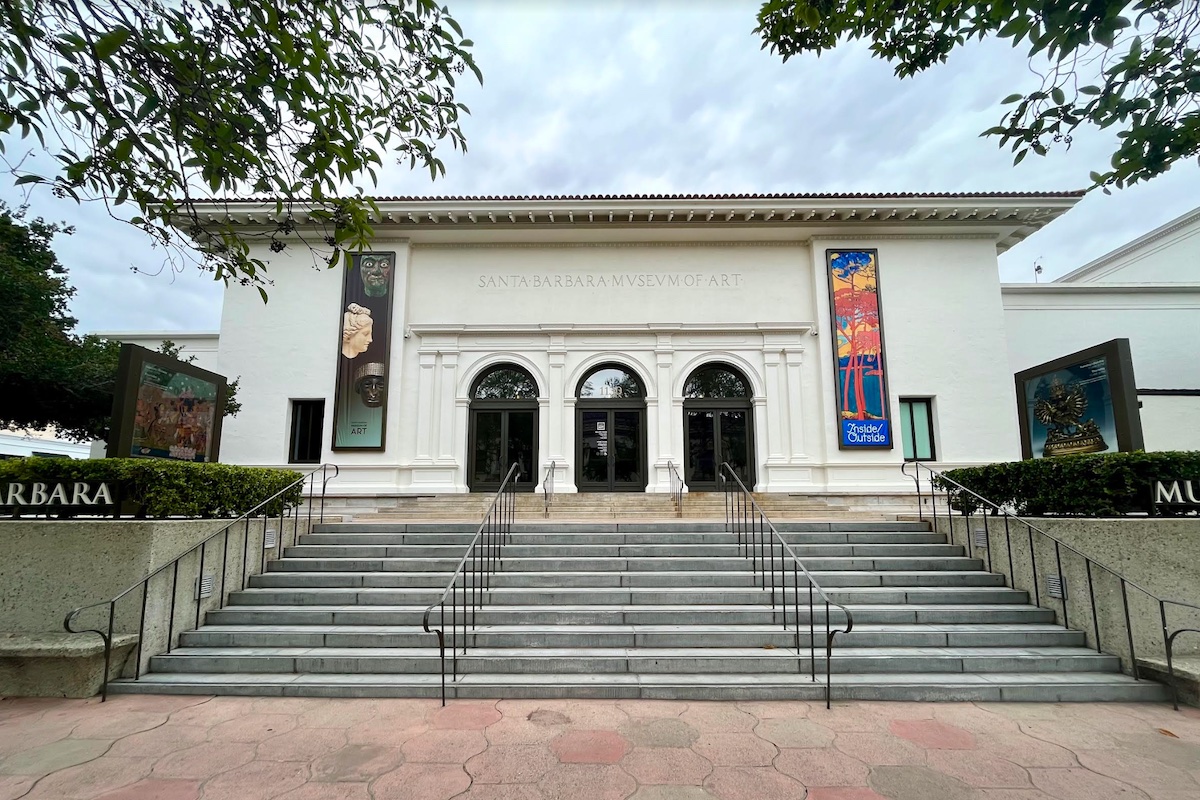
In January 2006, the heirs of a Jewish entertainer and art collector murdered in a Nazi concentration camp sent a letter to the Santa Barbara Museum of Art formally demanding the return of a valuable drawing they said was stolen from their late relative by Hitler’s Third Reich.
Offering sworn testimony from art historians, handwriting analysts, and other experts as to the drawing’s true provenance, the family of Fritz Grünbaum and their attorneys insisted they had legal claim over the work by Austrian Expressionist Egon Schiele, which had been gifted to the museum by one of its founders at a time when Nazi-looted art with forged paper trails flowed freely through the market.
“To this date,” the letter said, “the world’s museum community has been content to enjoy this stolen art without searching for heirs and explanations. It is time for this shameful conspiracy of silence to end.”
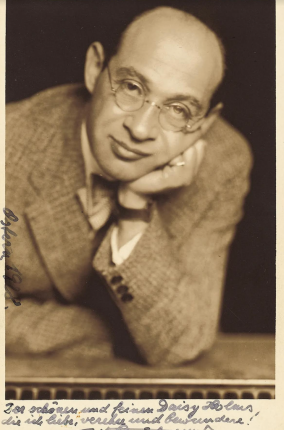
On Wednesday, a small measure of that silence was broken with an announcement by the Manhattan District Attorney’s Office that seven Schiele paintings and drawings from Grünbaum’s once-vast collection ― including the pencil sketch in Santa Barbara’s possession valued at $1 million ― were finally being returned to his relatives. [Editor’s Note: The valuation of the drawing has been updated from $800,000 to $1 million based on new information from officials.]
The other six pieces ― with values ranging from $1 million to $2.75 million each ― were owned by the Museum of Modern Art and the Morgan Library & Museum, both in New York, and two private collectors.
“We are returning these beautiful works to their rightful owners, to the family,” said District Attorney Alvin Bragg during the emotional ceremony that coincided with the Jewish High Holy Days. “This incredible art collection was stolen by the Nazi regime.”
In a subdued yet ultimately optimistic speech, Grünbaum heir Timothy Reif thanked Bragg and his office’s Antiquities Trafficking Unit for pursuing a new criminal investigation into the pieces after his family had originally fought to take them back through civil litigation. A lawsuit filed by Reif and other relatives earlier this year against the Santa Barbara Museum of Art, which the museum challenged on jurisdictional grounds, was withdrawn last month in anticipation of Bragg’s announcement.
“By recovering these long-lost artworks, our law enforcement authorities have achieved a measure of justice with excellence, unfailing resolve, and courage,” said Reif. Their successful efforts ― which Reif predicted would set a legal precedent for similar Holocaust restitution cases around the world ― “reminds us once again that history’s largest mass murder has too long concealed history’s greatest robbery.”
Santa Barbara Museum of Art spokesperson Katrina Carl said Director Larry Feinberg and the museum’s Board of Trustees determined that the drawing should be returned after Manhattan prosecutors presented them with “relevant information concerning the provenance.” The piece had not been displayed in decades, Carl earlier noted.
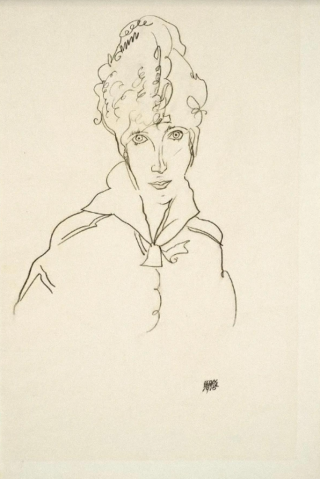
“The artwork, ‘Portrait of the Artist’s Wife,’ had been donated to the Museum in 1957 by Wright Ludington, one of the institution’s founders,” Carl said. “This decision comes in response to a claim made by both the family members and the Manhattan District Attorney’s Office, which has been investigating a number of Schiele artworks in various museums and private collections.”
A legal stipulation signed by Nicholas Mutton, chair of the museum’s Board of Trustees, acknowledged the museum was voluntarily handing over the Schiele “pursuant to a criminal investigation” into “Nazi-looted” property.
A celebrated Austrian cabaret singer, writer, and actor who was openly critical of Hitler, Fritz Grünbaum was arrested in 1938 and sent to the Dachau Concentration Camp. While imprisoned, he was forced to sign over power of attorney to his wife, Elisabeth, who was then strong-armed into giving up his art collection when soldiers “Aryanized” their home.
Among the nearly 500 pieces Grünbaum had amassed, 81 were by Schiele, a protégé of Gustav Klimt and member of Austria’s growing modernist movement. Schiele ― known for his nude self-portraits and depictions of prostitutes ― had been declared a “degenerate artist” by the Nazi Party, and any of his work that survived destruction was auctioned off or sold to finance the regime.
While at Dachau, Grünbaum often performed for his fellow prisoners, putting on one final show on New Year’s Eve, 1941, two weeks before he was killed. Elisabeth was murdered the following year in another death camp.
By the 1950s, a number of Schieles and other works from Grünbaum’s collection had surfaced on the art market. They were owned for a time by a Swiss dealer before being sold to a New York gallery that then distributed them to buyers around the globe.

It is not clear when or how Ludington acquired his. A wealthy socialite and voracious art collector, Ludington was a central figure in the formation of the Santa Barbara Museum of Art, sitting on its building committee, serving as its first vice president, and donating hundreds of paintings, sculptures, and other objects to its permanent collection.
The fact that the stolen Schieles had passed through New York gave authorities there the jurisdiction to pursue them, the Manhattan DA’s Office explained. “Justice may be delayed, but it will never be denied,” Bragg said.
The office’s efforts were aided by the Holocaust Expropriated Recovery Act passed by Congress in 2016, which eased the requirements for reclaiming property lost through Nazi persecution. Investigators were also bolstered by a 2018 ruling in a related court case that proved Grünbaum did not give up his collection willingly, as one art dealer had argued. “We reject the notion that a person who signs a power of attorney in a death camp can be said to have executed the document voluntarily,” wrote the judge.
Reif and the other heirs said they plan to put “Portrait of the Artist’s Wife” up for auction along with five of the other recovered works. The proceeds will fund the newly created Grünbaum Fischer Foundation and establish a scholarship program for young musicians. Grünbaum, Reif has said, was always quick to support budding artists and new members of his orchestra.
In his speech, Reif, a judge on the United States Court of International Trade, read a comedic ditty by Grünbaum that lamented his lack of children:
My word, it is truly bitter, you see,
to die out completely like this ― 1, 2, 3.
Imagine, having been so fit and distinguished,
you find your life from one day to the next quite extinguished.
“I beg you please not to forget that the Grünbaum dynasty has life in it yet,” Reif said. “When viewing these artworks, imagine Fritz and Elisabeth in their lively Vienna apartment, singing and dancing and cracking jokes. Remembering their lives defeats Hitler’s plan to erase this brave Jewish man’s name from the book of history.”
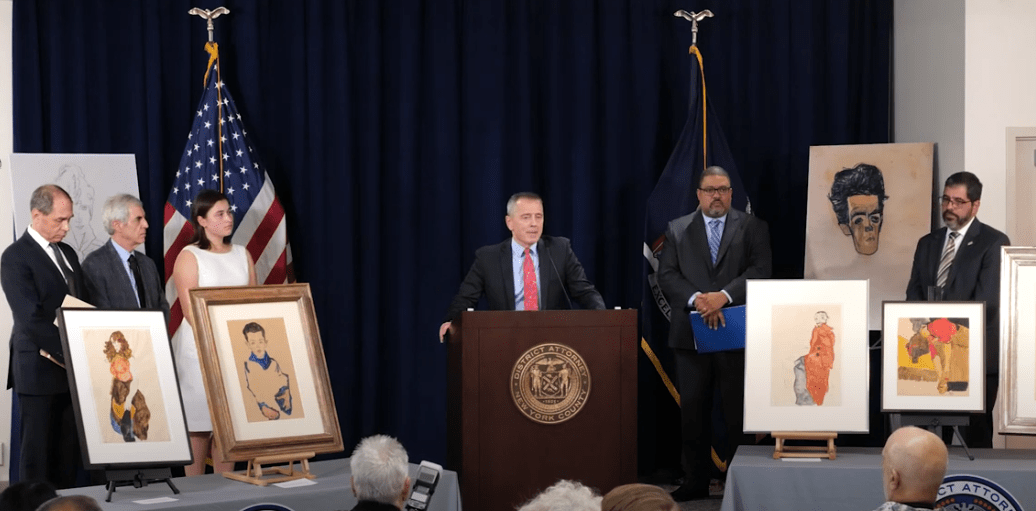

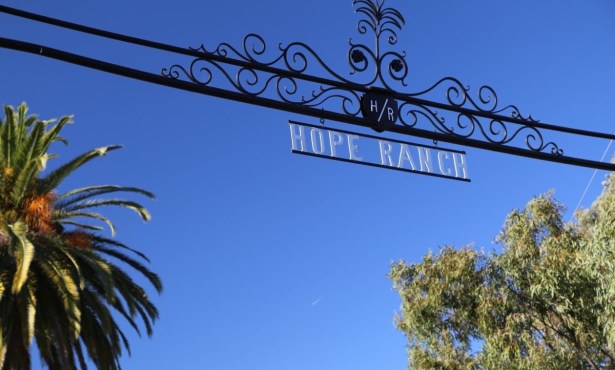

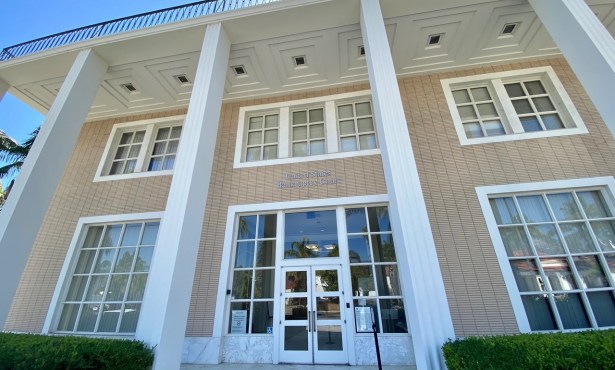
You must be logged in to post a comment.